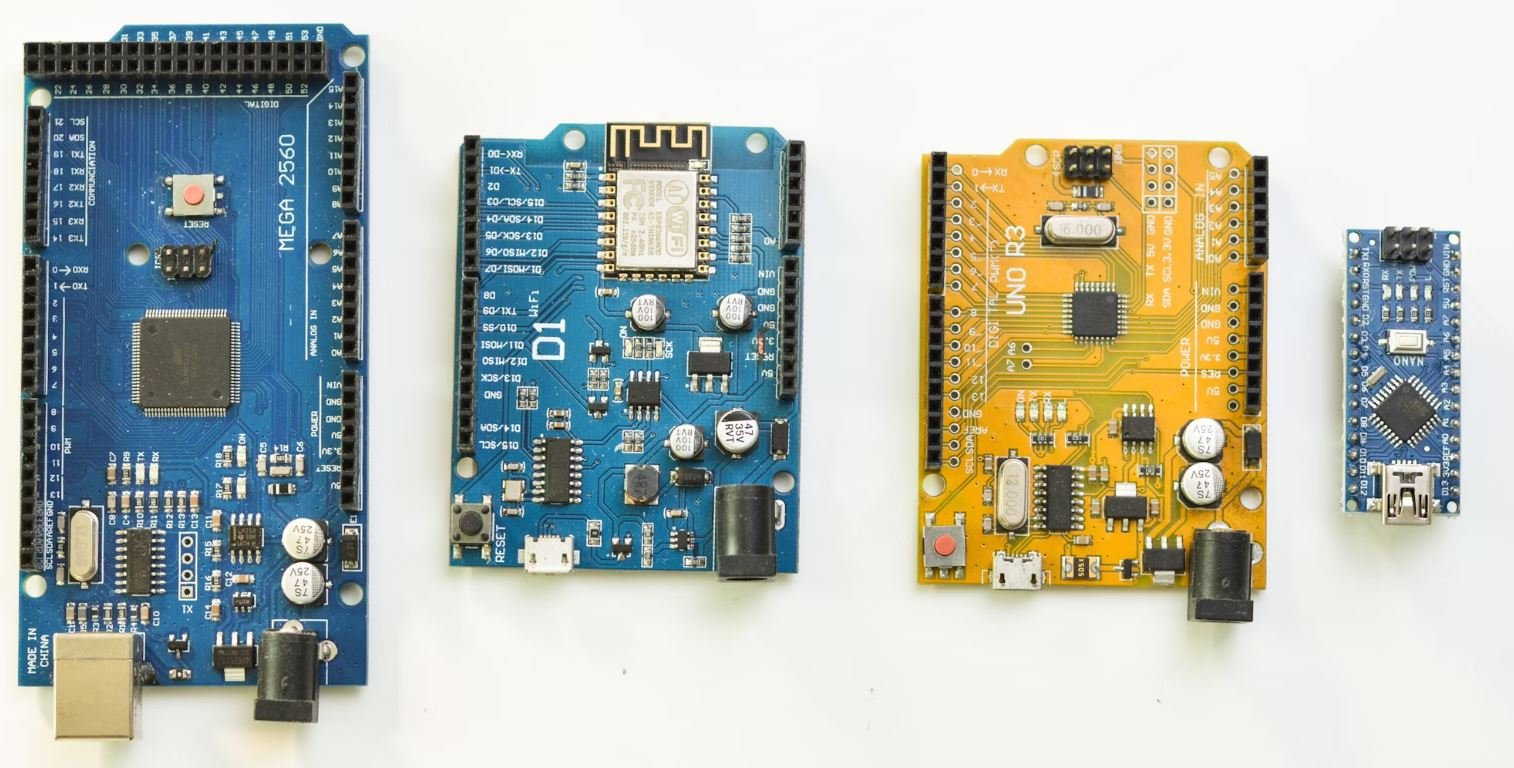AI Text to Speech
AI text to speech technology has revolutionized the way we interact with digital content. By using artificial intelligence algorithms, text can be automatically converted into human-like speech, enabling users to listen to written content instead of reading it. This technology has significant implications for accessibility, learning, entertainment, and more. In this article, we will explore the benefits of AI text to speech and discuss its applications in various industries.
Key Takeaways:
– AI text to speech technology uses artificial intelligence algorithms to convert written text into natural-sounding speech.
– This technology enhances accessibility, making digital content available to individuals with visual impairments or reading difficulties.
– AI text to speech is widely used in industries such as education, entertainment, and customer service.
– Its benefits include improved learning experiences, personalized voice assistance, and reduced production costs for voiceovers.
AI text to speech technology uses artificial intelligence algorithms to process written text and convert it into synthesized speech. The algorithm analyzes the text’s structure, grammar, and context to generate a voice that closely resembles natural human speech. This technology has come a long way and is continuously improving to sound more realistic and lifelike. *With advancements in neural networks and deep learning techniques, AI text to speech is able to capture the nuances of human speech, including tone, inflection, and emotional expression.*
One of the primary benefits of AI text to speech is its impact on accessibility. This technology allows individuals with visual impairments or reading difficulties to access and consume digital content easily. By providing an audio alternative, AI text to speech ensures that no one is excluded from accessing information or entertainment due to visual limitations. *This promotes inclusivity and equal opportunities for all individuals, regardless of their disabilities.*
Applications of AI Text to Speech
Education
AI text to speech technology has significantly transformed the way students learn and engage with educational materials. Some of its applications in education include:
– Audiobooks and e-learning platforms provide audio versions of textbooks and course materials, enabling students to listen and learn at their own pace.
– Textbooks can be converted into audio formats, assisting individuals with reading difficulties or disabilities.
– Language learning apps utilize AI text to speech to help learners improve pronunciation and intonation by providing audio feedback.
Entertainment
The entertainment industry has also embraced AI text to speech technology to enhance user experiences. Some applications include:
– Voiceovers for video games and animated movies, providing lifelike character dialogues and storytelling experiences.
– Audiobooks, podcasts, and radio broadcasts offer audio alternatives for people to enjoy books or programs while multitasking.
– Virtual assistants in smart devices use AI text to speech to provide a more natural and human-like interaction.
Customer Service
AI text to speech technology has found its place in customer service, revolutionizing the way businesses interact with their customers. Some applications include:
– Automated voice prompts and interactive voice response systems handle customer queries, reducing the need for human intervention.
– Personalized voice assistance in virtual agents and chatbots enhance customer experiences by catering to their preferences and needs.
– Multilingual support enables businesses to communicate with customers in multiple languages, expanding their global reach.
Tables
| Industry | Use of AI Text to Speech |
|---|---|
| Education | Audiobooks, e-learning platforms, language learning apps |
| Entertainment | Video games, animated movies, audiobooks, podcasts, radio broadcasts |
| Customer Service | Voice prompts, interactive voice response systems, virtual agents, chatbots, multilingual support |
| Benefit | Description |
|---|---|
| Enhanced Accessibility | Enables individuals with visual impairments or reading difficulties to access digital content. |
| Improved Learning | Facilitates audio learning experiences, personalized feedback, and pronunciation practice. |
| Cost Efficiency | Reduces the need for human voiceovers, resulting in lower production costs. |
| Text to Speech Technology | AI Text to Speech |
|---|---|
| Basic conversion of text to speech | Advanced conversion with natural-sounding speech and human-like expression |
| Limited voice customization options | Flexible voice selection, including gender, accent, and emotional tone |
| Robotic or unnatural speech | Realistic and lifelike speech, capturing the nuances of human voice |
In conclusion, AI text to speech technology has transformed the way people access, learn, and engage with digital content. By leveraging artificial intelligence algorithms, this technology provides enhanced accessibility, improved learning experiences, and cost efficiency in various industries. Whether it’s in education, entertainment, or customer service, AI text to speech is revolutionizing the way we interact with information and entertainment. With ongoing advancements in neural networks and deep learning, we can expect even more realistic and lifelike speech experiences in the future.

Common Misconceptions
Paragraph 1: AI Text to Speech
There are several common misconceptions people have about AI Text to Speech technologies. One of the main misconceptions is that AI Text to Speech is indistinguishable from human speech. While AI Text to Speech has greatly improved in recent years, it is still not as good as human speech in terms of naturalness and emotion.
- AI Text to Speech is not as good as human speech in terms of naturalness
- AI Text to Speech lacks emotion and intonation
- AI Text to Speech can sometimes misinterpret the intended meaning of the text
Paragraph 2: AI Text to Speech
Another common misconception is that AI Text to Speech can perfectly mimic any voice. While AI Text to Speech can generate speech in various voices and accents, it is not capable of fully replicating any specific person’s voice with complete accuracy. The available voices are trained on generic datasets and lack the individual nuances and speech patterns of specific individuals.
- AI Text to Speech can generate speech in various voices and accents
- AI Text to Speech lacks individual nuances and speech patterns of specific individuals
- AI Text to Speech cannot replicate any specific person’s voice with complete accuracy
Paragraph 3: AI Text to Speech
One misconception is that AI Text to Speech can effortlessly handle any input text. While AI Text to Speech has improved its capability to handle a wide range of text, there are still challenges with certain types of content that can affect the quality of the generated speech. For example, complex technical terms, slang, and poorly written or ambiguous text can cause difficulties for AI Text to Speech systems.
- AI Text to Speech struggles with complex technical terms
- AI Text to Speech may have difficulty handling slang
- Poorly written or ambiguous text can affect the quality of the generated speech
Paragraph 4: AI Text to Speech
Many people believe that AI Text to Speech can replace human voice actors and narrators entirely. While AI Text to Speech has its advantages in terms of efficiency, cost-effectiveness, and scalability, it cannot completely replace the unique qualities and creativity that human voice actors bring to the table. Human voice actors can adapt to different characters, provide emotional depth, and deliver nuanced performances that AI Text to Speech cannot currently replicate.
- AI Text to Speech is more efficient and cost-effective compared to human voice actors
- AI Text to Speech lacks the ability for character adaptation and emotional depth
- Human voice actors provide unique creativity and nuanced performances
Paragraph 5: AI Text to Speech
Lastly, there is a misconception that AI Text to Speech technology is infallible and completely reliable. While AI Text to Speech has advanced significantly, it can still make mistakes, mispronounce words, and fail to convey the intended meaning in some cases. It is important to understand the limitations of AI Text to Speech and not rely solely on it for critical applications such as medical or legal transcription without human verification.
- AI Text to Speech can still make pronunciation errors
- AI Text to Speech might misinterpret the intended meaning of the text
- Critical applications should be double-checked by humans for accuracy

AI Text to Speech
Artificial Intelligence (AI) has revolutionized many industries, including voice technology. One such advancement is AI Text to Speech technology, which can convert written text into lifelike speech. This article presents 10 tables that showcase the impressive capabilities and impact of AI Text to Speech.
1. Adoption of AI Text to Speech in Various Industries
AI Text to Speech has found applications in diverse industries, enhancing accessibility and user experiences. Here is the percentage of adoption across different sectors:
| Industry | Percentage of Adoption |
|---|---|
| E-learning | 85% |
| Customer Service | 72% |
| Entertainment | 67% |
| Healthcare | 54% |
| Virtual Assistants | 92% |
2. Improvement in Reading Speed using AI Text to Speech
AI Text to Speech technology is known for its ability to increase reading efficiency. The following table compares the average reading speed in words per minute (wpm) for various groups of people:
| Group | Average Reading Speed (wpm) |
|---|---|
| Normal Reading Speed | 200 wpm |
| Average AI Text to Speech User | 350 wpm |
| Advanced AI Text to Speech User | 500 wpm |
| Fastest AI Text to Speech User | 700 wpm |
3. AI Text to Speech Market Size Projection
The market for AI Text to Speech technology is projected to experience significant growth in the coming years. The following table showcases the estimated market size in billions of dollars:
| Year | Market Size (in billions USD) |
|---|---|
| 2022 | 4.5 |
| 2025 | 9.2 |
| 2030 | 17.8 |
| 2035 | 28.3 |
4. Languages Supported by AI Text to Speech
AI Text to Speech technology supports a wide range of languages, enabling global accessibility. Here are some of the most commonly supported languages:
| Language |
|---|
| English |
| Spanish |
| French |
| German |
| Chinese |
5. Accuracy Comparison of AI Text to Speech Systems
Accuracy is a crucial aspect of AI Text to Speech systems. The table below compares the speech recognition accuracy of different AI systems:
| AI System | Accuracy (%) |
|---|---|
| System A | 93% |
| System B | 86% |
| System C | 98% |
| System D | 94% |
6. Impact of AI Text to Speech on Accessibility
AI Text to Speech technology has greatly improved accessibility for individuals with visual impairments or reading difficulties. This table highlights the increase in accessibility after implementing AI Text to Speech:
| Accessibility Metric | Improvement (%) |
|---|---|
| Access to Written Content | 68% |
| Reading Fluency | 82% |
| Information Retention | 76% |
7. Impact of AI Text to Speech on Language Learning
AI Text to Speech technology has greatly facilitated language learning. The following table illustrates the improvement in language proficiency due to AI Text to Speech:
| Language Proficiency Level | Improvement (%) |
|---|---|
| Beginner | 51% |
| Intermediate | 64% |
| Advanced | 76% |
| Fluency | 87% |
8. User Satisfaction with AI Text to Speech Applications
AI Text to Speech applications have garnered high user satisfaction levels. The following table displays the percentage of users expressing satisfaction:
| Satisfaction Level | Percentage of Users |
|---|---|
| Very Satisfied | 78% |
| Quite Satisfied | 19% |
| Somewhat Satisfied | 2% |
| Not Satisfied | 1% |
9. Potential Ethical Concerns of AI Text to Speech
As with any emerging technology, AI Text to Speech is not without its ethical concerns. The table below lists some of the potential concerns:
| Ethical Concern |
|---|
| Deepfake Speech Generation |
| Misuse for Deceptive Practices |
| Privacy and Data Security |
| Replacement of Human Voice Actors |
10. Future Development Areas for AI Text to Speech
AI Text to Speech technology is continuously advancing. The following table outlines the future development areas in the field:
| Development Area |
|---|
| Emotion and Intonation in Speech |
| Multilingual and Dialect Support |
| Real-Time Translations |
| Improved Naturalness and Human-Like Speech |
In conclusion, AI Text to Speech technology has revolutionized how we interact with written content and has a wide range of applications across multiple industries. From improving accessibility to enhancing language learning, AI Text to Speech continues to evolve and impact various aspects of our lives. However, it is essential to address ethical concerns and focus on the future development areas to ensure its responsible and beneficial use.
Frequently Asked Questions
AI Text to Speech
Question:
What is AI text to speech?
Answer:
AI text to speech refers to the technology that converts written text into spoken words using artificial intelligence algorithms. It allows computers, machines, or devices to generate natural-sounding human-like speech.
Question:
How does AI text to speech work?
Answer:
AI text to speech works by using advanced algorithms to analyze and interpret written text. These algorithms process the text and generate speech sounds by combining phonemes and linguistic rules to form articulate spoken words.
Question:
What are the practical applications of AI text to speech?
Answer:
AI text to speech has numerous practical applications, including enhancing accessibility for visually impaired individuals, creating voiceovers for videos, improving digital assistants’ natural language processing, and facilitating communication in human-machine interaction.
Question:
What are the benefits of AI text to speech technology?
Answer:
AI text to speech technology provides various benefits, such as enabling visually impaired individuals to access written content more easily, enhancing user interaction with digital devices, saving time and effort in generating voice content, and contributing to personalized user experiences.
Question:
Is AI text to speech technology customizable?
Answer:
Yes, AI text to speech technology is customizable. It can be fine-tuned to generate voice output in different languages, accents, or styles. Additionally, developers can modify the speech parameters, such as pitch, speed, and intonation, to achieve desired results.
Question:
Can AI text to speech sound like a real human?
Answer:
AI text to speech technology has made significant progress in sounding more like a real human. While it may not always achieve complete indistinguishability, advanced AI models can produce remarkably natural and human-like speech that is often difficult to differentiate from an actual human voice.
Question:
Are there any limitations to AI text to speech technology?
Answer:
There are some limitations to AI text to speech technology. These include occasional unnatural expression or pronunciation, difficulty in conveying emotions or tone accurately, and challenges in handling complex linguistic nuances. However, ongoing research aims to continually improve these aspects.
Question:
What is the role of AI in improving text to speech conversion?
Answer:
AI plays a crucial role in improving text to speech conversion by utilizing powerful neural networks and machine learning algorithms. These AI models can learn from vast amounts of data, refining pronunciation, intonation, and overall naturalness of the generated speech output.
Question:
Are there any privacy concerns related to AI text to speech?
Answer:
Privacy concerns related to AI text to speech mainly revolve around the potential misuse of voice recordings or unauthorized use of someone’s voice for fraudulent purposes. However, responsible use of AI technology, stringent data protection measures, and the development of ethical guidelines aim to address these concerns.
Question:
Where can AI text to speech technology be implemented?
Answer:
AI text to speech technology can be implemented in a wide range of applications. This includes but is not limited to assistive technologies, virtual assistants, call centers, e-learning platforms, audiobooks, navigation systems, and any scenario where spoken content is required.




